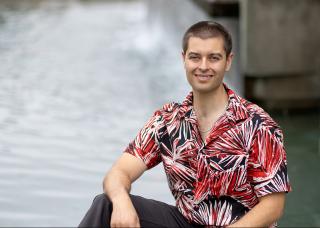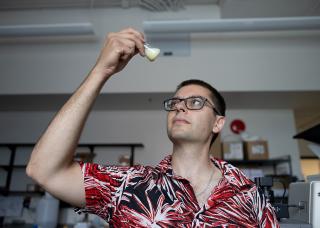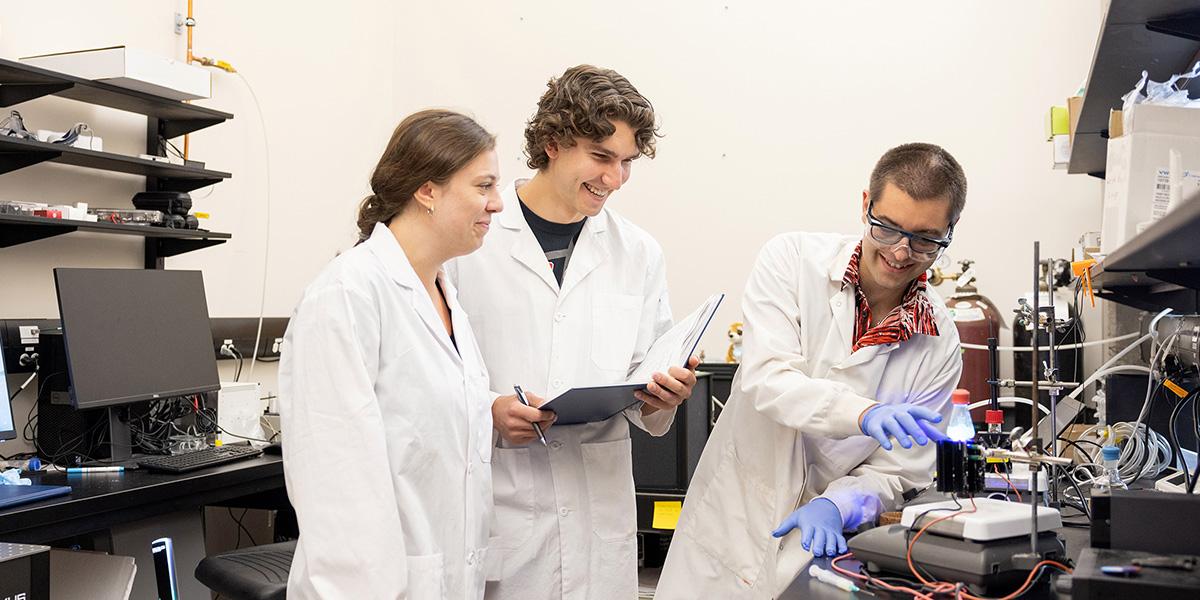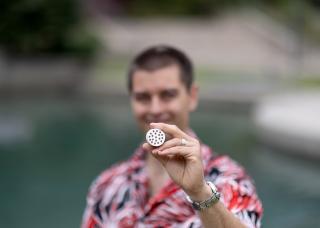Turning the taps to clean water from Kelowna to Kolkata
UBC Okanagan’s Dr. Robert Godin has devised a low-cost method to help remove arsenic from drinking water

UBC Okanagan’s Dr. Robert Godin has devised a low-cost method to help remove arsenic from drinking water

In spring of 2023, we asked our faculty and staff to tell us who among them were taking actions or driving initiatives to advance sustainability at the university. This is part three in a five-part series recognizing sustainability efforts at UBC.

When Dr. Robert Godin, Assistant Professor of Chemistry at UBC Okanagan, learned about the scale of arsenic contamination in drinking water in Kolkata, India, he was inspired to help. Having grown up in an old farmhouse in New Brunswick, he recognized the value of nature and the need to preserve it early on. He had focused his passion into developing sustainable energy fuel, but now he realized his knowledge could be applied to a new problem.
“I was aware that arsenic is bad for you, but I learned that the vast majority of arsenic contamination is from natural causes,” he recalls of his trip to the Kolkata in 2018, where he attended a conference on the issue as a postdoctoral researcher at Imperial College London. “Because it’s driven by local geochemistry, prevention isn’t feasible, and effective remediation techniques are needed.”
In his day-to-day work, Robert leads the Solar Energy Conversion and Spectroscopy Group at UBC Okanagan, using photocatalysis to develop low-cost semiconductors that can produce hydrogen fuel from water and sunlight. Photocatalysts, he explains, are materials that react to sunlight to help drive chemical reactions. And when he learned about Kolkata’s attempts to remove arsenic from its drinking water, he realized that photocatalysis could hold the key to a more effective method of arsenic decontamination. If successful, his solution would have the potential to improve millions of lives; arsenic contamination affects an estimated 200 million people worldwide, according to the World Health Organization.
The big challenge with arsenic, explains Robert, is that it comes in different forms, one of which is much more difficult to remove. While arsenic V (the Roman numeral 5, chemically indicating an oxidation state of 5+) is relatively easy to filter out, arsenic III is much more challenging—and almost 100 times more toxic. Robert realized that, by embedding carbon nitride, an inexpensive photocatalytic material, into ceramic filters currently used in Kolkata, arsenic III could easily be converted into arsenic V.
Robert is now focused on strengthening his research in this area and raising more awareness about it, in Canada and beyond. He’s also in discussions with the manufacturers of Kolkata’s filtration materials about incorporating his photocatalyst into their ceramic. “That’s really where I’ll feel that I’ve accomplished something. At the fundamental science level, it may be driven by curiosity, but ultimately you want your work to have a societal benefit,” he shares.
He’s hopeful that one day the impact of this work will be felt in Kolkata—and, perhaps, in other places around the world struggling with arsenic contamination, such as Ghana, Nepal and Vietnam, among many others. He feels certain that this solution could help prevent millions more people around the world from long-term arsenic exposure, which can cause skin lesions and skin cancer, in addition to bladder and lung cancers.
"At the fundamental science level, it may be driven by curiosity, but ultimately you want your work to have a societal benefit."
Dr. Robert Godin, Assistant Professor of Chemistry at UBC Okanagan

As he continues to work to bring his breakthrough to fruition, Robert reflects that the experience has given him a new outlook and understanding for the ways in which water and sustainability affect us all—from Kolkata to Kelowna. “I find it fascinating to look at the relationship of water on our two UBC campuses,” he says. “In Vancouver you’re surrounded by an abundance of ocean water, but it’s not potable. And in the Okanagan, we have fresh water from Okanagan Lake, but it’s one of the most stressed watersheds in Canada. In both cases,” he adds, “with our population growth, there's going to be an increased need for clean, potable water into the future, and for developing different ways to access water from different types of sources.”
And lest we think that British Columbians are immune to contaminants in our own water supply, Robert notes that the sediment in Okanagan Lake still has remnants of old pesticides, including lead arsenic: “It's lead and arsenic put together, and it’s pretty nasty stuff.” In addition, he points out that just four years ago, the city of White Rock completed construction on a multi-million-dollar water treatment plant to remove naturally occurring arsenic and manganese from its supply—underscoring the importance of this work.
"With our population growth, there's going to be an increased need for clean, potable water into the future, and for developing different ways to access water from different types of sources.”
Dr. Robert Godin, Assistant Professor of Chemistry at UBC Okanagan

Looking back on his journey, Robert credits his childhood experiences for igniting the spark that fuels him to this day. “My dad, a biologist, worked for the provincial government in natural resources,” he shares. “We did lots of nature walks in the forests and marshes. That helped me appreciate nature and recognize why it needs to be preserved.”
He also credits his glass-half-full perspective for keeping him engaged in environmental science. “I'm a pretty optimistic person,” he says. “Yes, there are certainly a lot of projections that aren’t ideal, and there are decisions that are still being made today that will have future environmental impacts. But I want to keep the optimism that this will change, and be part of the development of the technologies that can help us move forward towards a more sustainable future.”
Written by Jessica Werb, on behalf of UBC Internal Communications
Interviewed in June 2023
Getting down to the business of climate change (Sept. 18)
Planning and planting ideas for a more sustainable future (Sept. 25)
Sustainability action can be as simple as collecting stationery (Oct. 10)
Fuelling a sustainable solution to save energy and preserve food (Oct. 16)
Find the latest news, updates, events, and useful dates from across UBC, curated for faculty and staff by Internal Communications.
Access a library of resources from multiple UBC websites, all in one place.